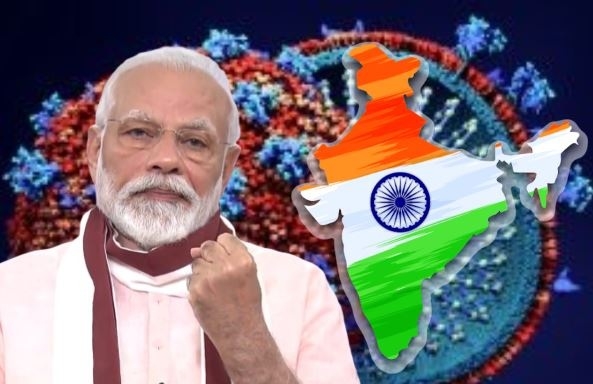Incentivise savings to make India Atmanirbhar
| Date :27-May-2020 |

By Kartik Lokhande :
These days, often comparisons are drawn between the impact on overall economy and population of India post economic meltdown of 2008-10 and COVID-19 pandemic. However, while drawing comparisons, one remembers that there was consensus to a great extent on one thing -- the habit of savings had done a lot to reduce the adverse impact of economic meltdown on India. Savings? Yes. Despite the fall in share market, where the word ‘investment’ rules the roost, Indian economy was acknowledged to have been insulated to a great extent from the recession. Much of the credit was given to domestic savings of which a good contribution came from household savings.

Of course, public sector, private sector also played their part. At that time, one still remembers, many economists had said that the household savings -- physical and financial -- had done much for the Indian economy in times of global economic crisis. If one has to look back, this was despite the fact that the small savings was being constantly discouraged in the new scheme of things. Discouraged? Yes. One remembers that there ‘used to be’ a Small Savings Directorate in Maharashtra. It offered wonderful schemes for small savings to those who could not afford big-time savings. The subscribers of these schemes included mostly small-time tea-stall owners, those working in grocery shops, roadside vendors, and even the daily-wagers.
However, gradually, in the ‘increase investment’ narrative building up post-economic reforms, the commission of agents who got these savings from the subscribers was slashed. Subsequently, the commission was systematically brought down to such a level that it no more attracted the agents. Obviously, the subscription went down and finally the Small Savings Directorate was closed down. Some people tried to hold the fort, but alas! Apart from small savings, there was an impact on the ‘traditional’ savings instruments like Kisan Vikas Patra, National Savings Certificate, public provident fund, recurring deposit (RD), pension fund etc. However, the rates of interest were slashed steadily. The money used to subscribe to Kisan Vikas Patra got doubled in a span of five years... years ago. However, in the new scheme of things, such instruments had to be discouraged.
So, slashing the rate of interest resulted in extension of period taken for doubling of money used to buy these certificates. Similarly, the rates of interest in RD were slashed. Even the savings in banks was no more attractive due to downward revision of rate of interest and deduction of service charges etc. There was little incentive on ‘savings’, and more on ‘investment’. The process was still slow before 2008. Hence, to a great extent, these savings and the money saved by women ‘informally’ (by keeping it in foodgrain boxes, purses, lockers at home) and also the traditional savings in gold and silver left liquidity in the hands of people. Not everyone had invested in mutual funds, share market, or other instruments that offered high returns. However, the erosion of market cap in the global economic meltdown left many exposed to ‘market volatility’.
Then on, people started saying, “Do not put all your eggs in one basket.” It meant that one should not depend solely on ‘investment’ in market but also use money for savings. This was a sane advice. However, within a few years, as market regained, there started a bullish trend. Soon, many people started going after ‘high returns’. There should be no problem if anyone benefits, but if it is at the cost of one’s savings, then one is sure to face a great discomfort in the wake of any crisis. Since the people, markets, and the Governments did not correct the course to incentivise savings, the Indian economy is once again passing through a narrow phase in the wake of COVID-19 pandemic.
Though India may be better placed as compared to some other economies, she will need to survive on the savings that are outside the ‘markets’. Though the Government has announced a package to convert crisis into opportunity by way of Atmanirbhar Bharat mission, for India to become truly self-reliant and self-propelled growth-oriented economy, focus will be needed to once again incentivise domestic savings in general and household savings in particular. For, as the Reserve Bank of India’s Staff Studies publication (October 2008) titled ‘Some perspectives on the possible impact of the recent financial turmoil in the global financial markets on the Indian economy’ had stated, “More than 95 per cent of investment is funded by domestic saving.”
To fund the country’s mission of becoming a self-reliant and self-propelled economy, India will need to do some course correction. While promoting ‘investment’ in share market in the globalised economy, she will have to strike a fine balance by increasing rate of interest on savings. This will enable the lower middle class to have some money at hand, and prepare it better to face the crises that may come their way in future. Incentivising savings will also leave some money in the ‘war chest’ of small and medium enterprises to deal with the crisis situations, and discourage them from diverting the liquidity for creation of personal assets by investing in the ‘markets’. Of course, experts may treat this as layman’s point of view. Still, the one-liner that the experts and economists need to focus on is -- Strike a fine balance between incentivising investment as well as savings. At this juncture, to fund local ventures and make India Atmanirbhar, it appears necessary.